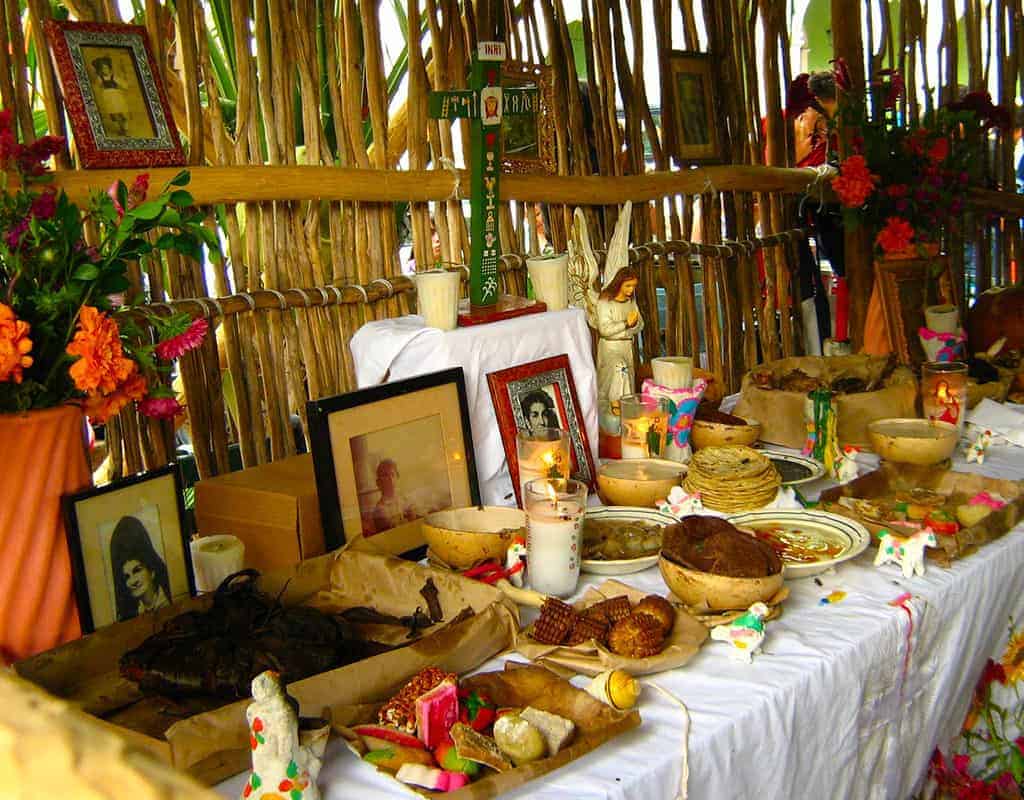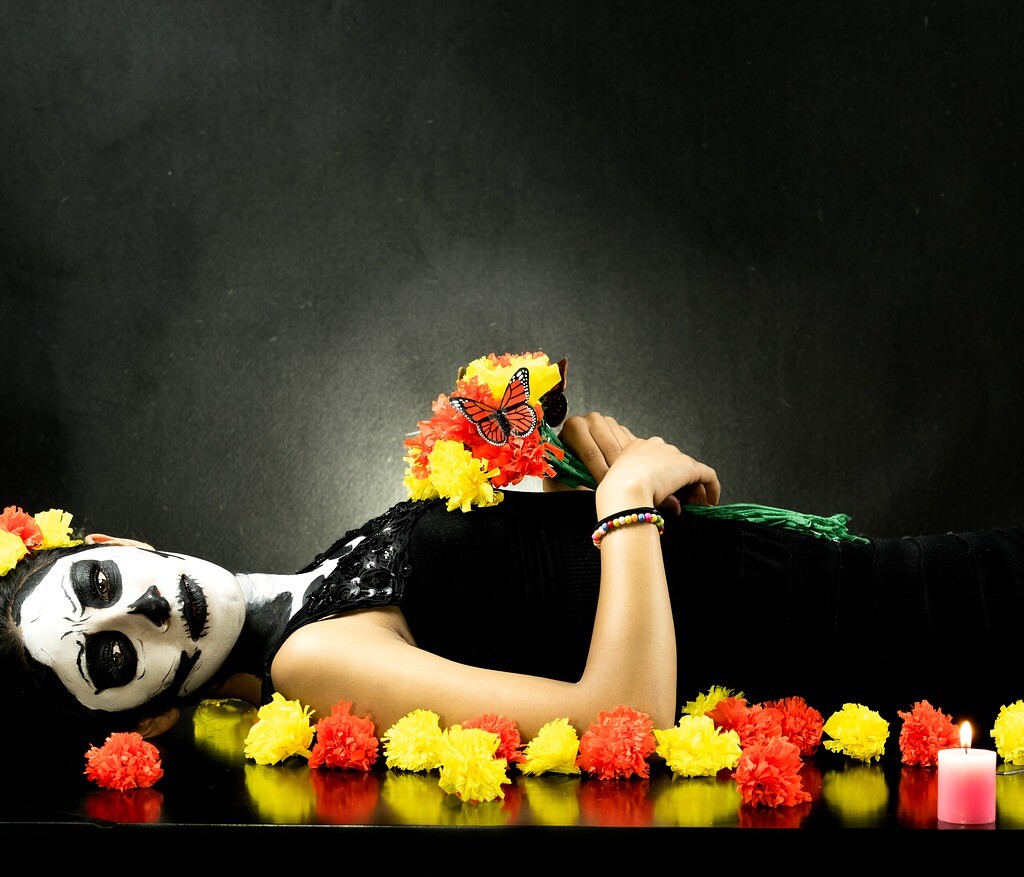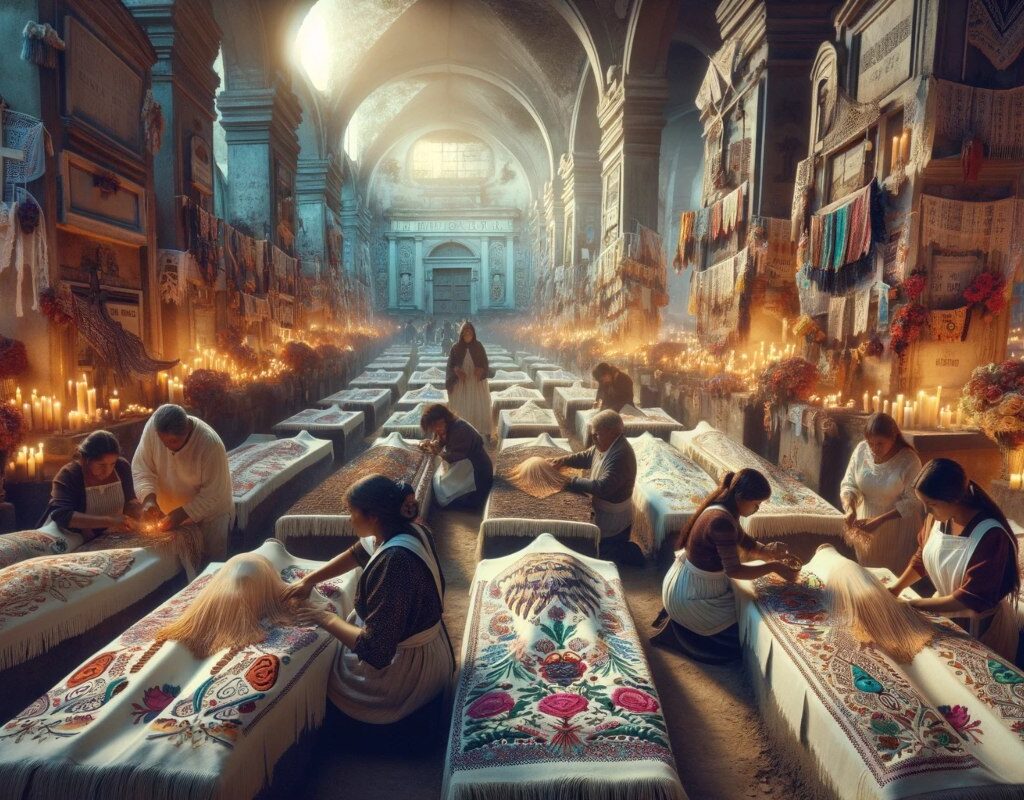The table was made by the Maya during the period of colonial evangelization with branches of the X’colonché plant and the four forks were made from the wood of the kivis tree (they did not use nails, as they thought that the deceased would be hurt and would not want to approach the table if it had nails or wires).
Elements of the Hanal Pixán Altar — Day of the Dead in Mexico
For children, adults, or the anima table alone, tables are now made of any material.
Mud, clay, wood and bowls made from the fruits of the Jcara tree -commonly called “jcaras” in the area- are the traditional materials often used on the tables.
Although it is important to point out that among the offerings placed on the table it is common to see objects made of other materials.
The tablecloth
Due to the cross-cultural mix that took place during the colony and that contrasts with the European/Christian worldview, which considers the existence of a heaven and a hell, the meaning of the tablecloth is attributed to the clouds.
The Mayan worldview was more complex and considered the existence of nine lower heavens and thirteen upper heavens (the last one called Mitnal).
While this tablecloth is brightly colored for children (to reflect the joyful and playful nature of their souls), it is white or gray for adults as a sign of respect and solemnity.
Censer
Considering that the food placed on the altar is believed to be consumed spiritually by the souls to whom it is dedicated, leaving only their physical presence, the purpose of the incense burner, or scent, during this celebration is to help with its light and aroma to make the “essence” of the food more pleasing to the souls.
As it is thought to remain only as a “husk”, the living relatives then physically consume this food (stripped of its vitalizing function). The resin of the copal tree, highly appreciated for its delicious aroma, is burned in the incense burner.
Salt and water
Two containers are placed on the altar, one filled with salt and the other with water, symbolizing the beginning and the end of life or the protection of the souls of the dead through rituals of purification from the “bad winds”.
According to customs, these components are expected to be present on the table. Small plates or earthenware jars called jcaras (known as lec in Maya) are often used as vessels. The souls are guided by these elements back to the other world so that they are not imprisoned in this one.
Mukbil chicken or Pib
The Mukbil chicken or pib is, without a doubt, the most distinctive feature of the celebration (burying or burying in the Mayan language).
This is a kind of corn cake or tamale that is filled with meat stews and various spices that are combined in a rich corn broth. The food is cooked inside a hole dug specifically for this purpose in the ground. There, a limestone base is built and heated with firewood.
Afterward, the food is placed in this type of pib oven and covered with carefully chosen leaves (without resins that impair the flavor) and with the same earth. The heat produced by the aforementioned stone bed is used to cook the food.
Among the materials used to prepare the pit and its cover, indigenous to the Yucatecan countryside, are henequen leaves, whose fiber is also used to bind the banana leaf that covers the pib and, as already mentioned, various local herbs.
Chukum
Since the use of other woods can negatively affect the flavor, the firewood is obtained from the leguminous plant known in the Mayan language as chukum (“the one that makes charcoal”). The preparation of this stew is essentially the same as that of cochinita pibil.
Although in homes without sufficient economic resources it is substituted by other dishes that are also considered typical of celebrations or holidays, such as “Relleno Negro”, at the hanal pixan table it is the main dish.
A week later, the Bix or eighth, which is a type of repetition less complex than the previous one (Ochovary of the decedent’s, it is also said of the meeting or party that takes place eight days after some event).
During those nights, rows of candles are lit in the albarradas and at the doors of the houses so that the souls can find their way in and out of the town after the deceased.
There is a myth that a few days before the ceremony, the spirits arrive to wash their clothes, prepare to receive tributes and expect to be treated well by the living. If the living did not pay attention to the offerings of food, drink and other things enjoyed by the deceased, they would not be able to return to the world of the living.




